Distinguished Lectures in Topology, Geometry and Physics
The lectures are held several times per semester, usually on Mondays at 4 pm in Smith hall, room 204 (Rutgers-Newark campus), preceded by tea at 3:30 pm.
Upcoming:
March 24
Location Smith 204

Speaker: Xuwen Zhu from Northeastern University
Website: https://xuwenzhu.sites.northeastern.edu/
Title: Analysis of gravitational instantons
Abstract: Gravitational instantons are non-compact Calabi–Yau metrics with L^2 bounded curvature and are categorized into six types. They have been studied from various points of view in recent works and have connections with gauge theory, algebraic geometry and mirror symmetry. I will describe three projects on gravitational instantons including: (a) Fredholm theory and deformation of the ALH* type; (b) non-collapsing degeneration limits of ALH* and ALH types; (c) existence of stable non-holomorphic minimal spheres in some ALF types. These three projects utilize geometric microlocal analysis in different singular settings. Based on works joint with Rafe Mazzeo, Yu-Shen Lin and Sidharth Soundararajan.
Recent lectures:
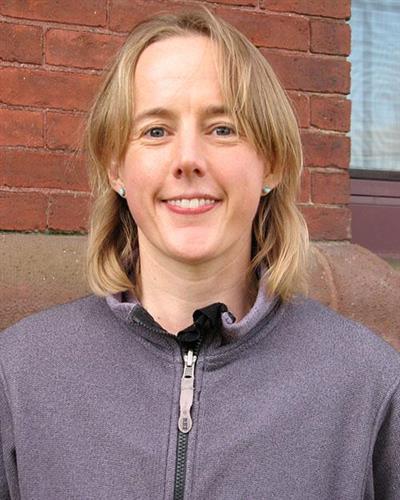 Speaker: Professor Genevieve Walsh from Tufts University
Speaker: Professor Genevieve Walsh from Tufts University
Website: https://genevieve.walsh.math.tufts.edu/
Title: Right-angled Coxeter groups and 3-pseudo-manifolds
Abstract. Right-angled Coxeter groups are a beautiful class of reflection groups defined by graphs. They are helpful test candidates for a variety of phenomena. We will describe a class of these which are virtually 3-pseudomanifolds, a structure which is very much like a 3-manifold. We will mainly give definitions and examples, but new results mentioned are joint with Lorenzo Ruffoni.
Speaker: Professor Marina Ville from the University of Tours, France
Title: Minimal surfaces in R⁴
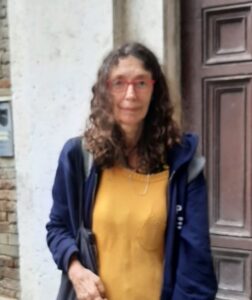 Abstract. A minimal surface increases its area under a small local deformation. Embedded minimal surfaces in R³ have been intensively studied, with many examples, on the one hand, and many non-existence theorems on the other hand. By contrast, very little is known about embedded minimal surfaces in R⁴ and most of the known examples are given by the algebraic curves of C². After an overview of the R³ case, I will ask some questions about the R⁴ case, indicate some tools and give a couple of examples. No prior knowledge of minimal surfaces is required
Abstract. A minimal surface increases its area under a small local deformation. Embedded minimal surfaces in R³ have been intensively studied, with many examples, on the one hand, and many non-existence theorems on the other hand. By contrast, very little is known about embedded minimal surfaces in R⁴ and most of the known examples are given by the algebraic curves of C². After an overview of the R³ case, I will ask some questions about the R⁴ case, indicate some tools and give a couple of examples. No prior knowledge of minimal surfaces is required
Link to research papers: https://www.researchgate.net/profile/Marina-Ville
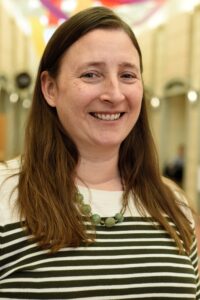 Speaker: Professor Kate Petersen from University of Minnesota-Duluth
Speaker: Professor Kate Petersen from University of Minnesota-Duluth
Website: https://sites.google.com/d.umn.edu/katepetersen

Speaker: Professor Jennifer Schultens from the University of California, Davis
Website: https://www.math.ucdavis.edu/~jcs/
Wikipedia page: https://en.wikipedia.org/wiki/Jennifer_Schultens
Title: Surfaces in Seifert fibered spaces
Abstract: Curve complexes and surface complexes come in several varieties. They have been studied by geometric group theorists and employed by low-dimensional topologists. The unique structure of Seifert fibered spaces allows us to describe certain surface complexes in terms of certain curve complexes.
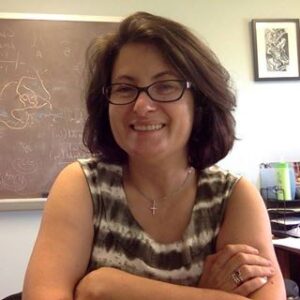
Speaker: Professor Efstratia Kalfagianni from Michigan State University
Website: https://users.math.msu.edu/users/kalfagia/
Wikipedia page: https://en.wikipedia.org/wiki/Efstratia_Kalfagianni
Title: Knot crossing numbers and Jones polynomials
Abstract: The crossing number of a knot is the smallest number of “double points” (crossings) over all planar projections of the knot. Crossing numbers are hard to compute and their behavior under basic topological operations is poorly understood. In this talk I will discuss how the knot Jones polynomial and its relative the colored Jones polynomial can be used to determine the crossing numbers for large families of knots. The talk is partly based on joint work with Christine Lee.
Speaker: Professor Shelly Harvey from Rice University
Website: https://math.rice.edu/~shelly/
Wikipedia page: https://en.wikipedia.org/wiki/Shelly_Harvey
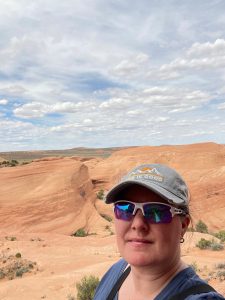 Title: Linking in 4-dimensions
Title: Linking in 4-dimensions
Abstract: Knots and links play an essential role in classifying 3- and 4-dimensional manifolds (in both the smooth and topological category). Where knots/links up to isotopy is the correct equivalence relation on knots/links to understand 3-manifolds. In this talk, we will be concerned with knots/links up to concordance – the correct equivalence relation to understand 4-manifolds. After a review of concordance, we will discuss new work (with C. Leidy, C. Davis, and J.H. Park) towards an understanding of links up to what could be called algebraic concordance. While the classification of knots up to algebraic concordance has been well understood since the 60’s, we still know little about links. This talk will be accessible to a wide audience. In particular, I will not assume any knowledge of knot theory or low-dimensional topology.
Organizers: Teng Fei, Kyle Hayden, John Loftin and Anastasiia Tsvietkova. Funded by NSF CAREER DMS-2142487 grant and NSF LEAPS-MPS DMS-2418918 grant.